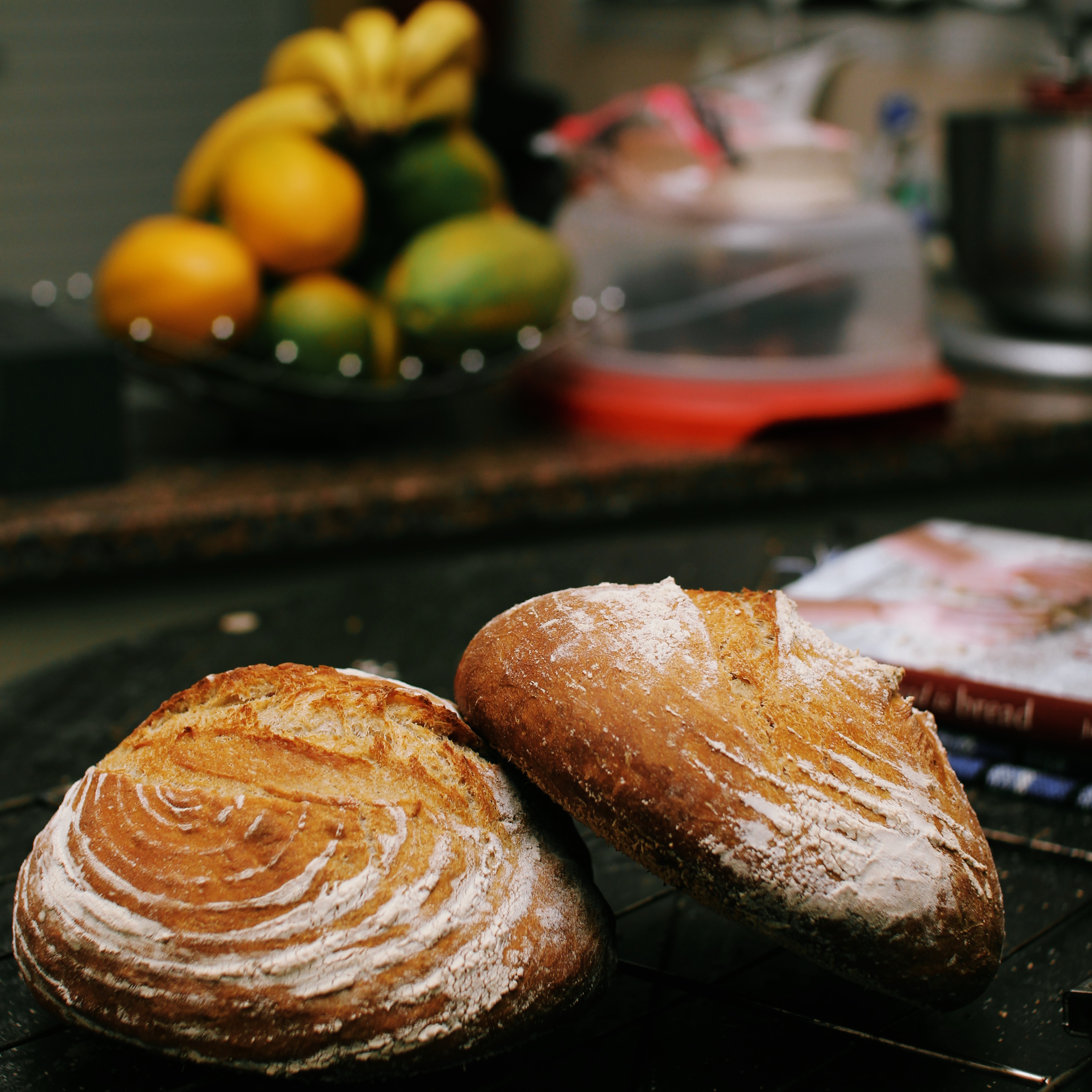Bread. 3 simple ingredients, combined in different ways, in different environments, and in different styles to create a plethora of choices. Flour, water, salt. That’s it. Combined in such a way, baked in such a way, presented in such a way that really, no one loaf is like any other. The water you use, the oven you have fired, the pot you bake in, the kneading, the folding, the time you set aside for rising, the slicing, the dusting, the cooling. All of these things come together to make your bread truly unique.
I have been baking bread for essentially no time at all. Honestly, I don’t know the first thing about it. However, I have developed a timing pattern that works, an oven temperature that works, my clay pot that works and I have found a recipe that I stick to, to the gram, that works.
I play about with the mix sometimes though, add more wholegrains or rye flours, experiment with stronger flour, with pure wheat gluten, and I have experimented baking with olives, cranberries, chia or other seeds stuffed into the dough.
But for me, a plain white sourdough bread hits the spot, it’s the one I have focussed more time and energy into perfecting, and it seems to be working. Sourdough is one of the simplest forms of bread, the 3 ingredients, combined with time and patience can yield amazing results. My bread has a long way to go, but I feel at a stage where I could sell this bread, it’s handmade, with water from the farms well and nothing else added. It’s as simple as it gets, and it makes great fucking sandwiches.
I don’t really know where my journey started with bread, or why I even started baking, but I took a simple recipe from a book and gave it a shot, I began to read more, about processes and times, I began following some master bakers and individuals on instagram and blogs that I thought had a unique and polarizing style. I looked to their breads with envy and pushed myself to learn more about the process. Somehow, along the way, I started to think about sourdough, it was the bread I always went for in the delis in New York if the choice was there, I loved the chewy texture, the slight sour undertone and the crisp, thick crust. This was the bread I wanted to bake.
Sourdough is basically bread baked using natural fermentation, creating your own local yeast, maintaining it, and getting it active enough to raise dough, and bake beautiful bread. Essentially, it’s flour + water x time.
Here at the farm, we’re lucky enough to have a well, it gives clean, fresh water, free from a lot of the chemicals associated with water from the tap in the average city, and my starter began to behave wonderfully with it. Some chemicals in treated water can have detrimental affects to your culture. The man is always trying to fuck up our culture, man.
Once my starter was bubbling away, I attempted my first sourdough loaf. Although it tasted all right, it wasn’t much of a looker, but this was the real beginning to baking.
Over the next months I began using different flours, developing my yeast and giving it some “double feeds” to get him leaping over buildings, I bought a large clay pot to bake the loaves in, and finally, even bought a few proofing baskets, brought all the way from the UK, (thanks Mum).
Once the new kitchen has been roofed, our first purchase will be a large bread oven, capable of baking 5-6 loaves at a time, I’ll probably go back to square one at this point, as learning the behaviour and timing of your oven is a quintessential step in the process. But I know I’ll figure it out, and soon I’ll be proving fresh, handmade, sourdough bread to the local area surrounding the farm. Soon, we’ll be baking bread to make a little bread.











 Tijolo, pedra, cimento e areia. Destruir e reconstruir.
Tijolo, pedra, cimento e areia. Destruir e reconstruir.